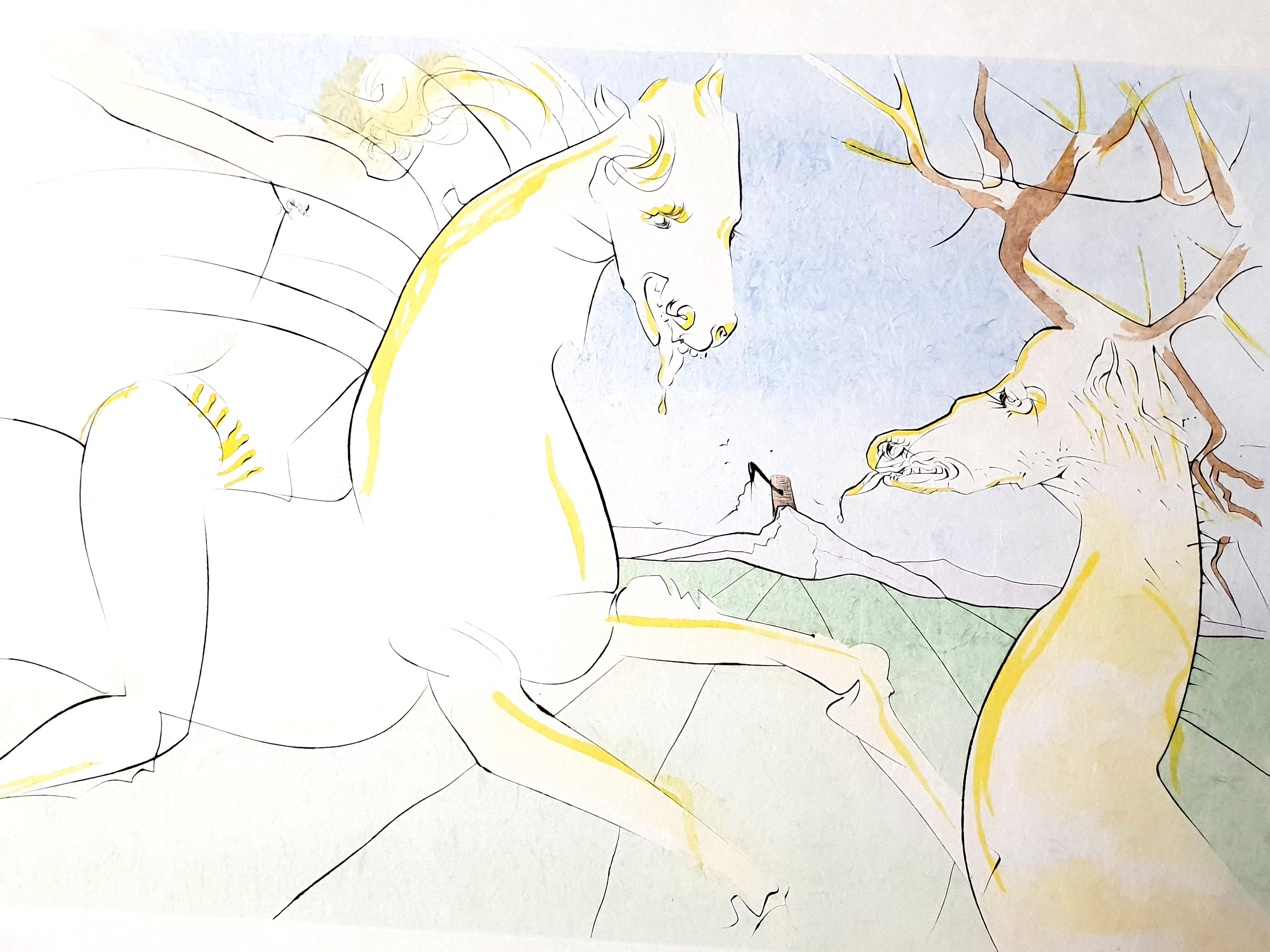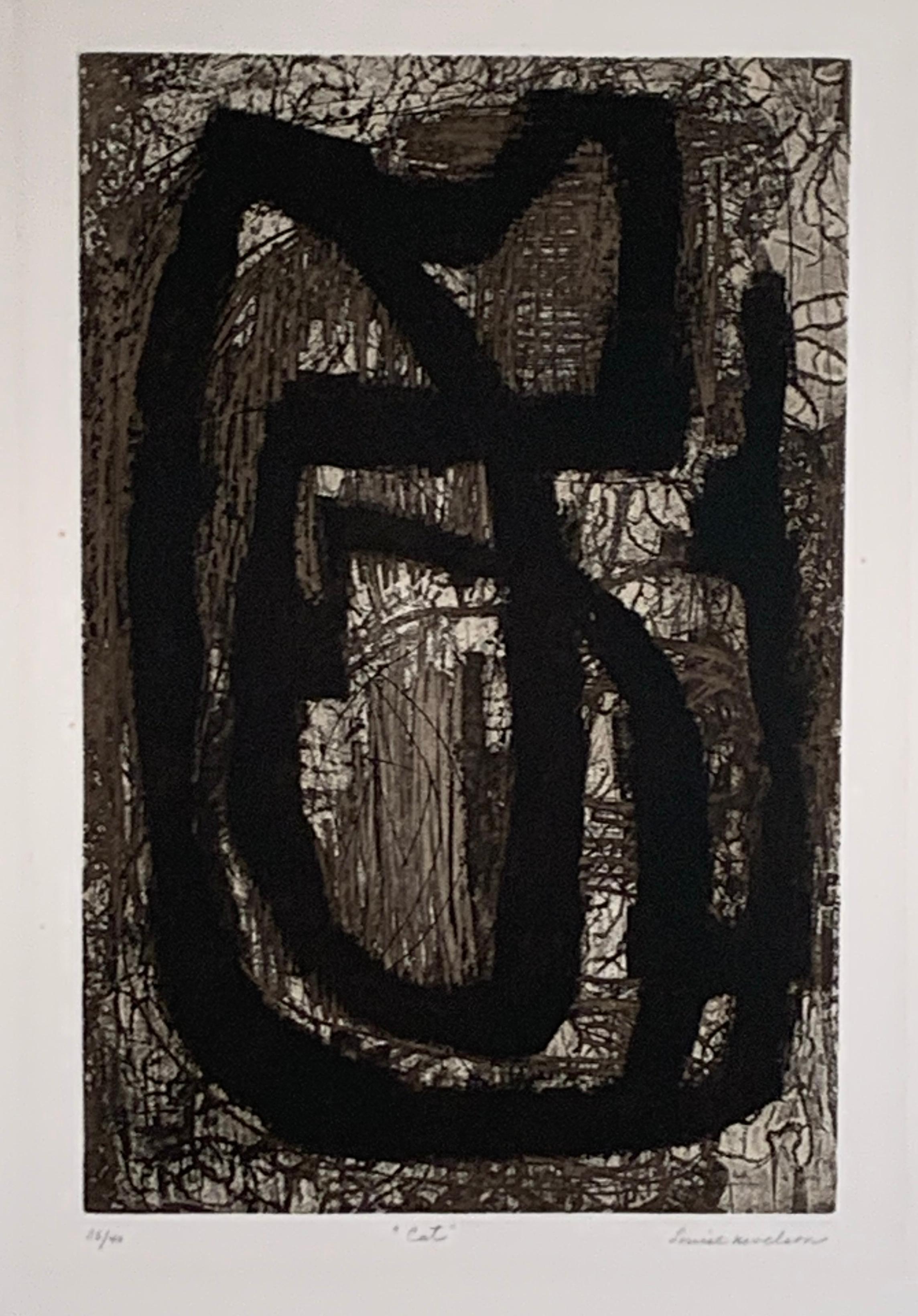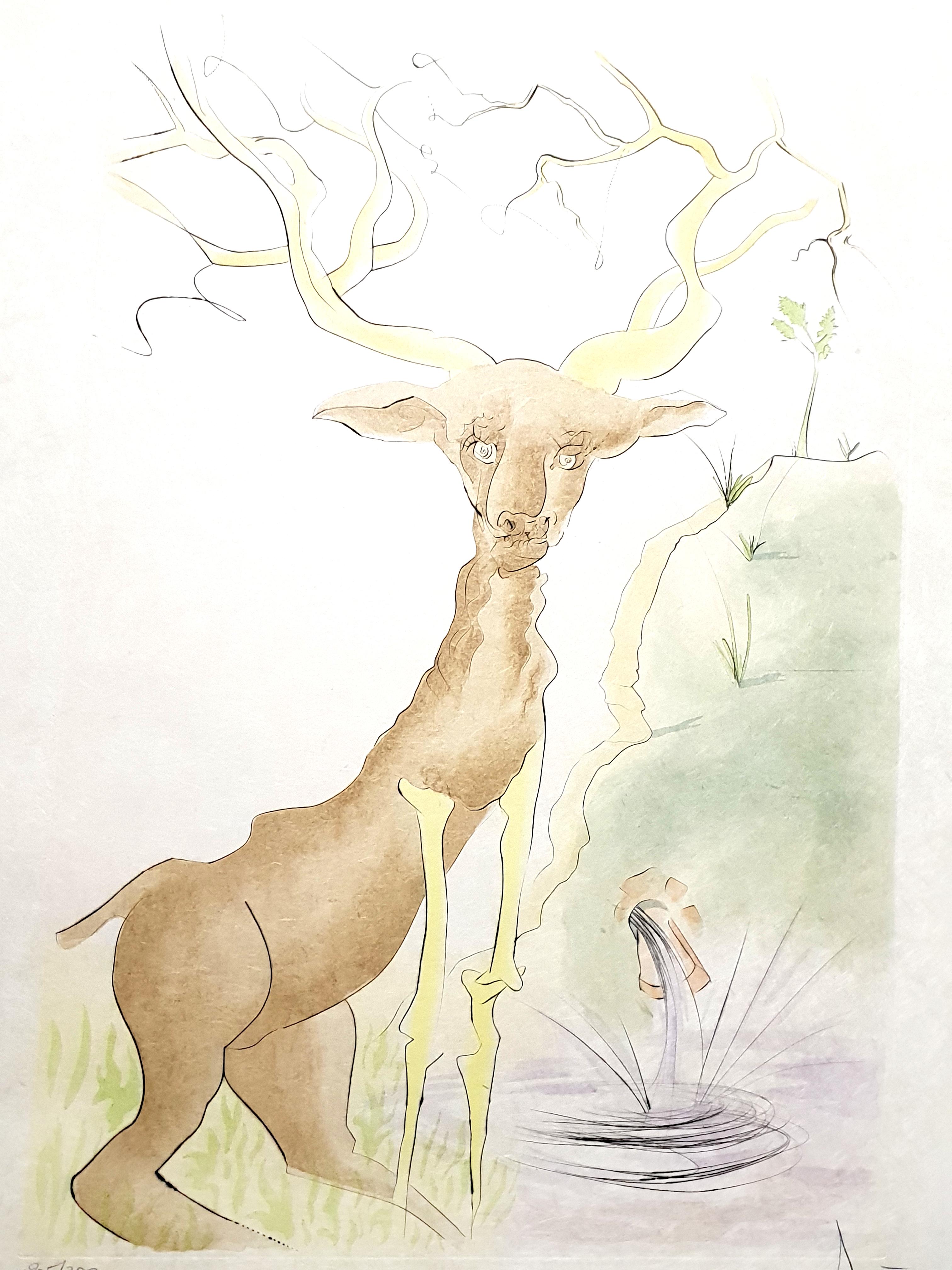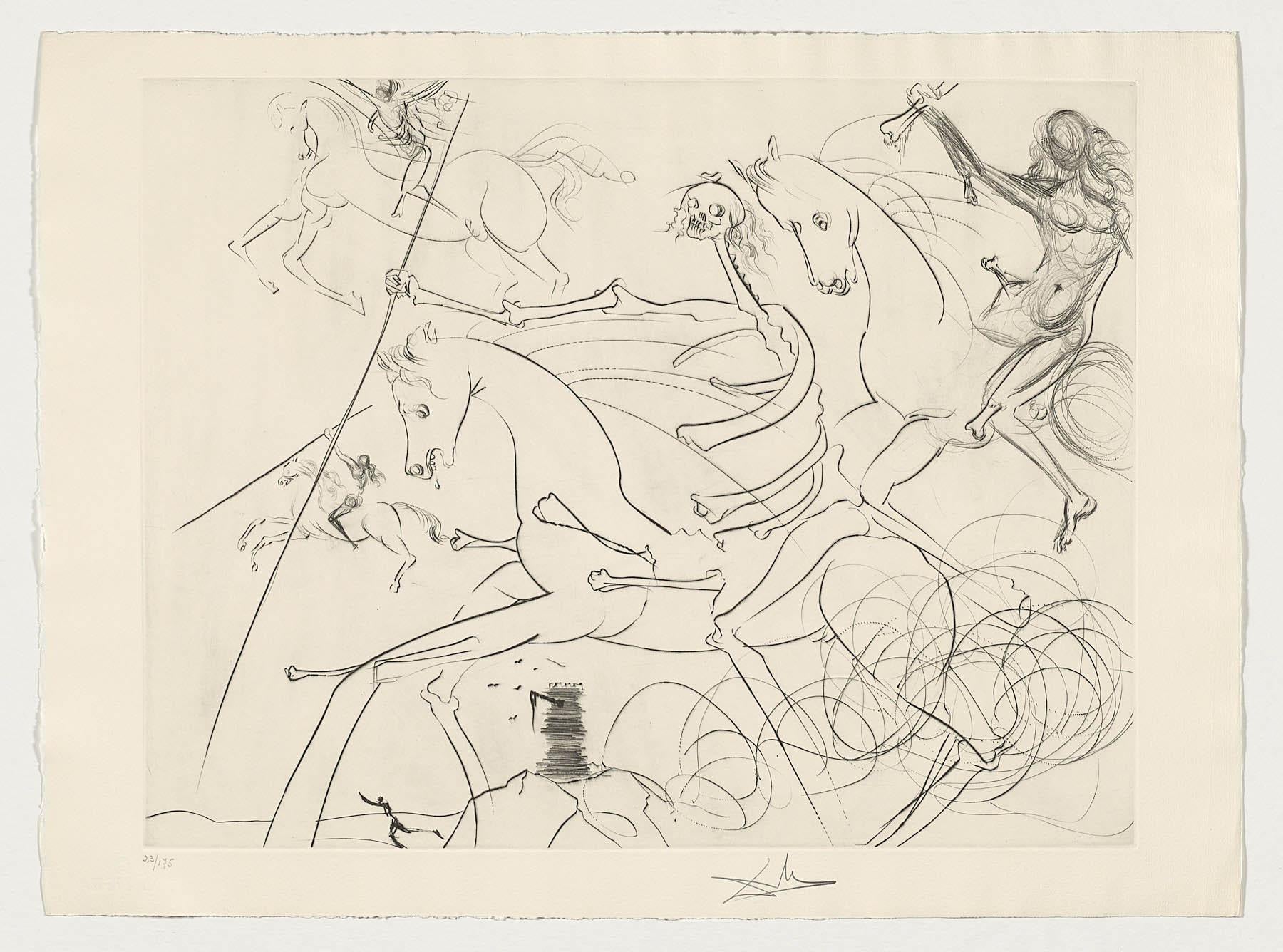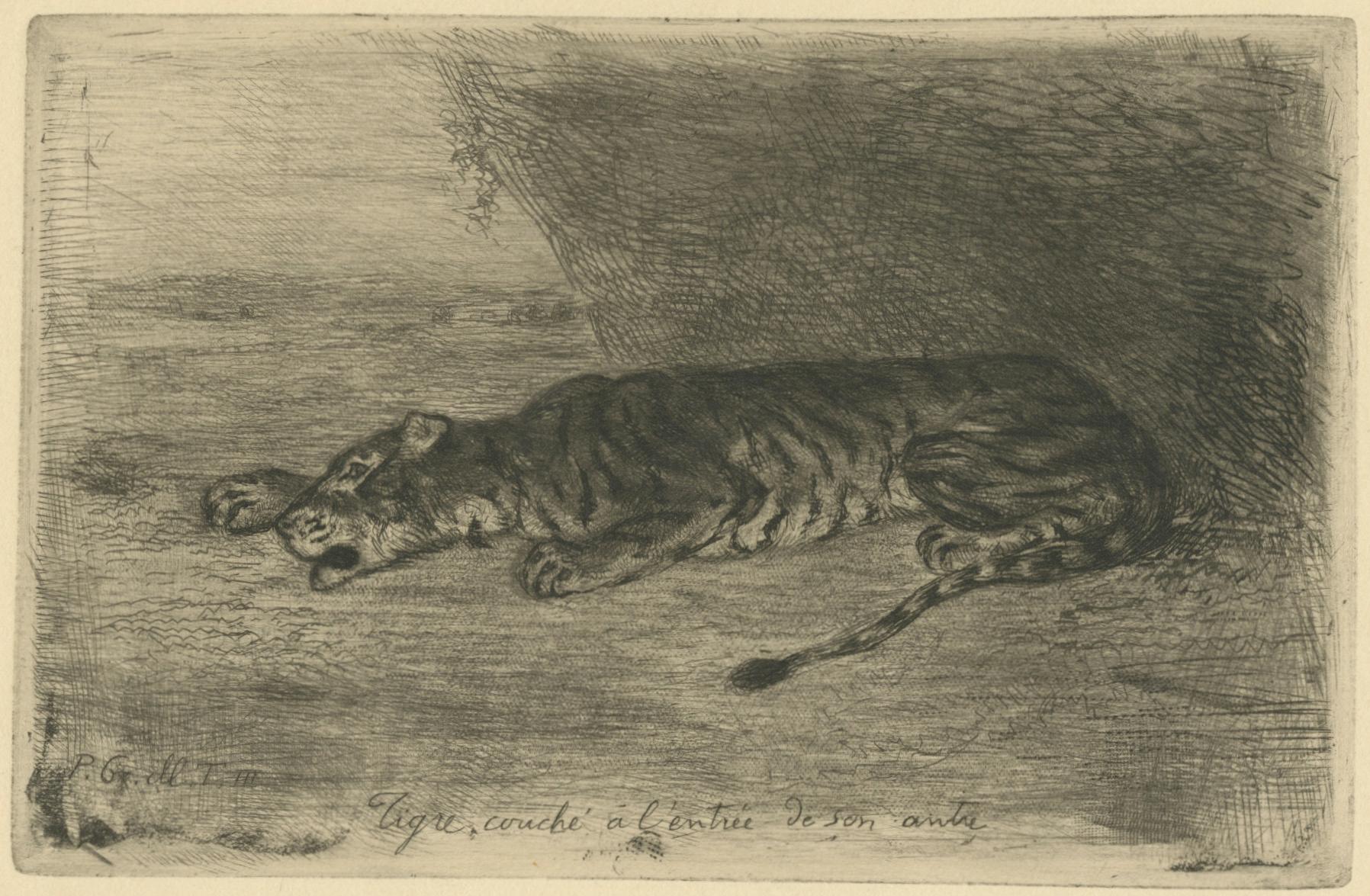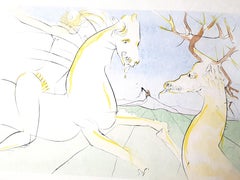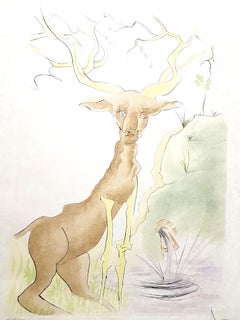
Le Conquerant.
View Similar Items
1 of 1
Bernard PicartLe Conquerant.1747
1747
About the Item
- Creator:Bernard Picart (1673 - 1733, French)
- Creation Year:1747
- Dimensions:Height: 9.85 in (25 cm)Width: 14.97 in (38 cm)
- Medium:
- Period:
- Condition:Light foxing. General age-related toning and occasional minor defects from handling.
- Gallery Location:Zeeland, NL
- Reference Number:Seller: 60109 TPCRC-A1-391stDibs: LU59232123853
You May Also Like
- Salvador Dali - The Rider and the Deer - Handsigned EngravingBy Salvador DalíLocated in Collonge Bellerive, Geneve, CHSalvador Dali - The Rider and the Deer - Handsigned Engraving 1974 Hand signed by Dali Edition: /250 The dimensions of the image are 22.8 x 15.7 inches on 3...Category
1970s Surrealist Figurative Prints
MaterialsDrypoint, Aquatint
- CATBy Louise NevelsonLocated in Portland, MENevelson, Louise. CAT. Baro 80. Etching and drypoint, 1965/6. Edition of 40 (There were also three Trial Proofs and four Artist's Proofs). Signed and numbered in pencil. 17 1/2 x 11 1/2 inches (plate), (sheet). The edition was printed at the Hollander Graphic...Category
1960s Animal Prints
MaterialsDrypoint, Etching
$4,200 - Salvador Dali - Le Cerf from Le Bestiaire de la Fontaine - Signed EngravingBy Salvador DalíLocated in Collonge Bellerive, Geneve, CHSALVADOR DALI Le Cerf se voyant dans l'eau from Le Bestiaire de la Fontaine 1974 Hand signed by Dali Edition: /250 The dimensions of the image are 22.8 x 15.7 inches on 31 x 23.2 in...Category
1970s Surrealist Figurative Prints
MaterialsDrypoint, Aquatint
- "Nohubo remedio" (There was no remedy) - Etching and Aquatint on PaperBy Francisco GoyaLocated in Soquel, CA"Nohubo remedio" (There was no remedy) - Etching and Aquatint on Paper Bold 3rd or 4th edition, circa 1868-1878, with burnished aquatints, drypoints etching, and engravings by Franc...Category
1790s Old Masters Figurative Prints
MaterialsEngraving, Paper, Etching, Aquatint
$3,080 Sale Price20% Off - Salvador Dali, Le Cerf Malade Signed Etching Engraving, Color Lithograph PochoirBy Salvador DalíLocated in Surfside, FLAn original signed drypoint etching with color pochoir by Spanish artist Salvador Dali titled "La Cerf Malade", depicting a stag deer, from the Portfolio: Le Bestiaire de la Fontaine. Hand signed in pencil and hand numbered. Limited edition in Roman numerals. Image size: 22.5" x 15.5". Sheet size is about 31 X 23 inches Le Bestiaire de la Fontaine Dalinisé, Robert Mouret, Editiones des Maîtres Contemporains, Paris, 1974 (M. & L. 653-664) (Reference: Albert Field, page 93 image 74-1F.) signed and numbered intaglio drypoints with pochoir in colors, hors-texte, on Arches, there were also editions of 250 on Japon and 120 on Auvergne numbered in Roman numerals. Salvador Dali (Spanish, 1904-1989 )is considered as the greatest original artist of the surrealist art movement and one of the greatest masters of art of the twentieth century. Dali began to study art at the Royal Academy of Art in Madrid. He was expelled twice and never took the final examinations. His opinion was that he was more qualified than those who should have examined him. Surreal Art In 1928 Dali went to Paris where he met the Spanish painters Pablo Picasso and Joan Miro. He established himself as the principal figure of a group of surrealist artists grouped around Andre Breton, who was something like the theoretical "schoolmaster" of surrealism. Years later Breton turned away from Dali accusing him of support of fascism, excessive self-presentation and financial greediness. By 1929 Dali had found his personal style that should make him famous - the world of the unconscious that is recalled during our dreams. The surrealist theory is based on the theories of the psychologist Dr. Sigmund Freud. Recurring images of burning giraffes and melting watches...Category
1970s Surrealist Animal Prints
MaterialsColor, Drypoint, Etching
- Spanish Artist hand signed limited edition original art print drypoint n16By Salvador DalíLocated in Miami, FLSalvador Dali (Spain, 1904-1989) 'Jinete apocalíptico', 1974 dry point, etching on paper 22.3 x 30.4 in. (56.5 x 77 cm.) Edition of 175 Unframed ID: DAL2001-016 Hand-signed by author ______________________________________________________ Salvador Felipe Jacinto Dalí i Domènech was a Spanish painter, sculptor, engraver, set designer and writer of the 20th century. An artist associated with surrealism, he is one of the most important figures in 20th century art, representing the archetype of the spectacular contemporary multifaceted artist. He develops his creative activity in various fields through the most diverse cultural formulas: painting, written media, performing arts, cinema, or public appearances in the press, radio, cinema, advertising, television, etc. Master of the most refined pictorial technique, especially drawing, along with various aesthetic languages - from impressionism, cubism, purism or late ultraism with Dadaist edges to the most radical surrealism, hyperrealism, pop-art or art optical—, will absorb every influence that is useful to build its own and personal language, halfway between technical tradition and thematic avant-garde. His paranoid-critical method is his main contribution to the surrealist movement and to the history of art as a new creative model with which Dalí's theories acquire theoretical entity - thanks to the successive interpretations that the Empordà artist made of his readings of Dalí's work. Sigmund Freud—and practice, applying it as a revealing liquid of images that can be represented plastically through multiple images, anamorphisms, relational mirages, irrational and heterogeneous symbolic images, pseudohallucinations, childhood memories, atavisms, obsessive ideas, etc., and recreating a polyphonic method capable of critically relating any visual or sensitive experience. With his method, Dalí makes paranoid delirium a whole mode of expression of an art that introduces us to the concrete irrationality that inhabits every creative process, constructing not only his works, but also his own character. as an artist. In Dalí, the relationship between his work and his personal history becomes evident. Much of the most significant biographical facts for the artist are implicitly or explicitly present in the content of his work and are the explanation of his complex and contradictory personality. In 1910, at the age of 6, he was enrolled by his father in the Hispano-French school of the Immaculate Conception of Figueres, where he learned French, his future language of culture. Dalí's first contact with Impressionism occurred in 1916, when he spent some time on the outskirts of Figueres, specifically at the Molí de la Torre estate, property of the Pichot family (intellectuals and artists), where he was the collection of the painter Ramón Pichot. In 1919 he participated for the first time in a group exhibition in the halls of the Societat de Concerts, and with a group of friends from the institute founded the magazine Studium, in which he published his first writings. A year later he moved to Madrid to study at the School of Fine Arts. In 1922 he won his first prize at the Concurs-exposició d'obres d'art originals d'students, held at the Galeries Dalmau (Barcelona). This same year he attended the School of Painting, Sculpture and Engraving in Madrid (Royal Academy of Fine Arts of San Fernando), and lived in the Student Residence, where he became friends with prominent personalities such as Luis Buñuel, Federico García Lorca, Pedro Garfias , Eugenio Montes, or Pepín Bello. However, a year later he was expelled from the Academy for his rebellious and revolutionary character, accused of leading a protest. It would be in 1927 when his surrealist period began, after having traveled to the Netherlands and France, meeting Flemish painters and Picasso. In Paris itself, in 1929, through Joan Miró, he came into contact with a group of surrealists headed...Category
1970s Surrealist Prints and Multiples
MaterialsPaper, Drypoint, Etching
Recently Viewed
View AllMore Ways To Browse
Les Cavaliers
Royalty Engraving
Cheval Painting
French Ant
Spanish Royalty Painting
Midcentury Horseman
Mexican Plates Set
Antique Alaska
Rodrigue Signed
Francis Orpen Morris
Lydon Bird Prints
Elephant Lithograph
Rodrigue Blue
Vintage Jungle Prints
Vintage Jungle Print
Small Animal Lithographs
Alexander Lydon
Alexander Francis Lydon
